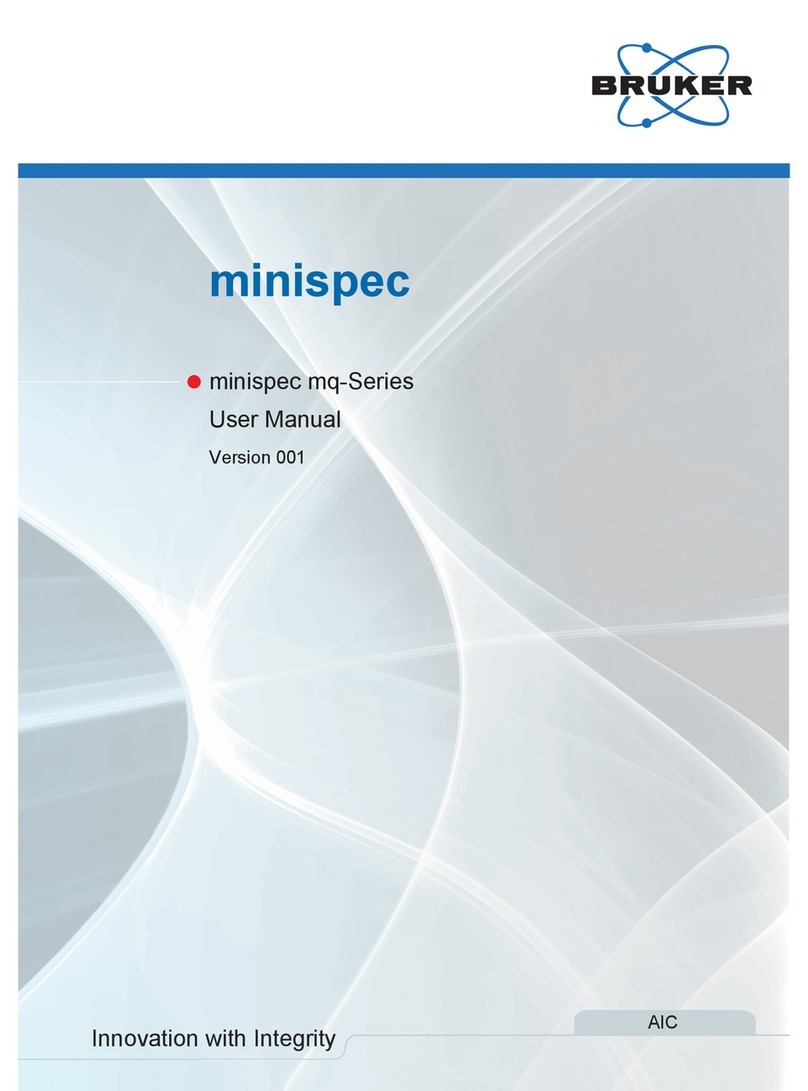
4 BRUKER BIOSPIN User Manual Version 002
Contents
5.1.1 CW Decoupling ............................................................................................................. 89
5.1.2 TPPM Decoupling ......................................................................................................... 90
5.1.3 SPINAL Decoupling ...................................................................................................... 91
5.1.4 Swept-Frequency-TPPM ............................................................................................... 91
5.1.5 XiX Decoupling ............................................................................................................. 91
5.1.6 Pi-Pulse Decoupling ..................................................................................................... 91
5.2 Homonuclear Decoupling ............................................................................................. 92
5.2.1 Multiple Pulse NMR: Observing Chemical Shifts of Homonuclear Coupled Nuclei .......... 92
5.2.2 Multiple Pulse Decoupling ............................................................................................. 92
BR-24, MREV-8, BLEW-12 ....................................................................................... 92
FSLG Decoupling ..................................................................................................... 92
DUMBO ................................................................................................................... 97
5.3 Transverse Dephasing Optimized Spectroscopy ........................................................... 98
6 Practical CP/MAS Spectroscopy on Spin 1/2 Nuclei ...........................99
6.1 Possible Difficulties ...................................................................................................... 99
6.2 Possible Approaches for 13C Samples ......................................................................... 99
6.3 Possible Approaches for Non-13C Samples ............................................................... 101
6.4 Hints, Tricks, Caveats for Multi-nuclear (CP-)MAS Spectroscopy ................................ 102
6.5 Setup for Standard Heteronuclear Samples 15N, 29SI, 31P ....................................... 102
7 Basic CP-MAS Experiments ...............................................................105
7.1 Pulse Calibration with CP .......................................................................................... 105
7.2 Total Sideband Suppression TOSS ............................................................................ 106
7.3 SELTICS ................................................................................................................... 110
7.4 Non-Quaternary Suppression (NQS) .......................................................................... 113
7.5 Spectral Editing Sequences: CPPI, CPPISPI and CPPIRCP ....................................... 116
8 FSLG-HETCOR ...................................................................................119
8.1 Pulse Sequence Diagram for FSLG HETCOR ............................................................ 120
8.2 Setting up FSLG HETCOR ......................................................................................... 121
8.3 Results ...................................................................................................................... 125
9 Modifications of FSLG HETCOR ........................................................127
9.1 Carbon Decoupling During Evolution .......................................................................... 128
9.2 HETCOR with DUMBO, PMLG or w-PMLG, Using Shapes .......................................... 129
9.2.1 The Sequence pmlghet ............................................................................................... 129
9.2.2 w-pmlghet ................................................................................................................... 132
9.2.3 edumbohet ................................................................................................................. 133
9.2.4 dumbohet ................................................................................................................... 134
9.3 HETCOR with Cross Polarization under LG Offset ..................................................... 135
10 RFDR ..................................................................................................137
10.1 Experiment ................................................................................................................ 138
10.2 Set-up ....................................................................................................................... 138
10.3 Data Acquisition ........................................................................................................ 139
10.3.1 Set-up 2D Experiment ................................................................................................. 139
10.4 Spectral Processing ................................................................................................... 141




























